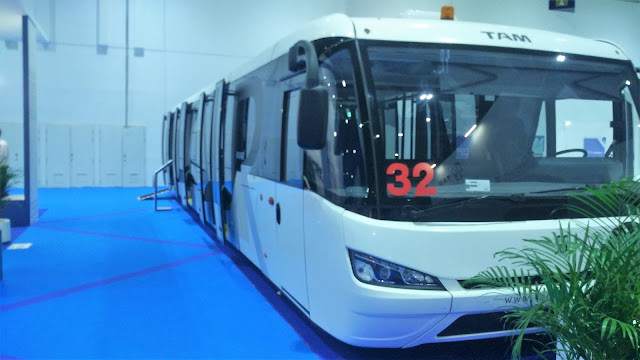Turbochargers Growing Globally As Fuel-Saving Device
PARIS – Sept. 27, 2012 – The number of passenger vehicles with turbocharged engines is expected to increase globally by 80 percent by 2017. This change is driven by increased demand for automobiles that deliver fuel-efficiency, performance and reduced greenhouse gas emissions, according to projections released today by Honeywell Transportation Systems at the 2012 Paris Motor Show.
Turbocharged engines are projected to be on 36 million passenger automobiles sold globally in 2017, representing almost 40 percent of all new light vehicle sales in that year. In 2011, turbochargers were on 20 million new vehicles sold globally, or about 25 percent all vehicles.
The United States, India and China are expected to lead the global growth as consumers and automakers in these markets search for ways to get more miles to the gallon, whether through gasoline or diesel engines. In Europe, where turbochargers are already on two-thirds of passenger vehicles, the technology is expected to gain even more ground as automakers meet more stringent CO 2 emissions requirements.
“Turbocharged engines are expected to continue to grow globally because they meet the needs of consumers in a wide range of vehicle segments and geographic markets,” said Honeywell Transportation Systems Vice President of Marketing and Product Management Peter Hill. “Turbochargers offer a combination of fuel-savings and performance at an affordable price compared to other technologies, making them an attractive option on subcompact cars, full-size luxury sedans, pick-up trucks and everything in between.”
Turbochargers are growing in all regions around the world because they allow automakers to use smaller, more efficient engines but still maintain performance.
In the U.S., the number of turbochargers is expected to almost triple in the next five years to more than 4 million in 2017, compared to 1.3 million in 2011. Turbos are projected to be on about one-quarter of all new U.S. vehicles in 2017.
The number of turbocharged engines in India is expected to more than triple from about 900,000 to more than 3 million from 2011 to 2017.
China also is projected to see tremendous growth, going from 2.1 million turbos in 2011 to 6.7 million new turbochargers in 2017 or about 25 percent penetration.
In Europe, turbochargers are expected to grow from 12.9 million, or 67 percent of the new automobiles, in 2011 to 17.4 million, or more than85 percent of new vehicles, in 2017.
A turbocharger uses exhaust gases that otherwise would be wasted to increase air flow into the combustion chambers providing big engine power performance with small engine efficiency and reduced emissions.
In Europe, new car emissions are required to improve 30 percent by 2020 from 2011 targets forcarbon dioxide per kilometer driven. Coupled with rising fuel prices and a growing awareness of environmental issues, consumers also have been seeking more fuel-efficient vehicles.
Turbocharged engines are projected to be on 36 million passenger automobiles sold globally in 2017, representing almost 40 percent of all new light vehicle sales in that year. In 2011, turbochargers were on 20 million new vehicles sold globally, or about 25 percent all vehicles.
The United States, India and China are expected to lead the global growth as consumers and automakers in these markets search for ways to get more miles to the gallon, whether through gasoline or diesel engines. In Europe, where turbochargers are already on two-thirds of passenger vehicles, the technology is expected to gain even more ground as automakers meet more stringent CO 2 emissions requirements.
“Turbocharged engines are expected to continue to grow globally because they meet the needs of consumers in a wide range of vehicle segments and geographic markets,” said Honeywell Transportation Systems Vice President of Marketing and Product Management Peter Hill. “Turbochargers offer a combination of fuel-savings and performance at an affordable price compared to other technologies, making them an attractive option on subcompact cars, full-size luxury sedans, pick-up trucks and everything in between.”
Turbochargers are growing in all regions around the world because they allow automakers to use smaller, more efficient engines but still maintain performance.
In the U.S., the number of turbochargers is expected to almost triple in the next five years to more than 4 million in 2017, compared to 1.3 million in 2011. Turbos are projected to be on about one-quarter of all new U.S. vehicles in 2017.
The number of turbocharged engines in India is expected to more than triple from about 900,000 to more than 3 million from 2011 to 2017.
China also is projected to see tremendous growth, going from 2.1 million turbos in 2011 to 6.7 million new turbochargers in 2017 or about 25 percent penetration.
In Europe, turbochargers are expected to grow from 12.9 million, or 67 percent of the new automobiles, in 2011 to 17.4 million, or more than85 percent of new vehicles, in 2017.
A turbocharger uses exhaust gases that otherwise would be wasted to increase air flow into the combustion chambers providing big engine power performance with small engine efficiency and reduced emissions.
In Europe, new car emissions are required to improve 30 percent by 2020 from 2011 targets forcarbon dioxide per kilometer driven. Coupled with rising fuel prices and a growing awareness of environmental issues, consumers also have been seeking more fuel-efficient vehicles.




Comments
Post a Comment